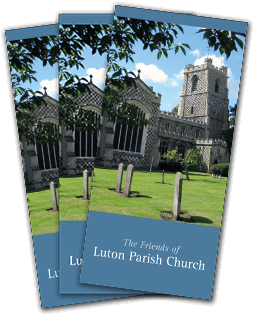History of Luton Parish Church
Discover St Mary’s Church, Luton, a historic landmark in Bedfordshire
St Mary’s Church in Luton stands as one of Bedfordshire’s most significant and historic places of worship. With a heritage spanning over 850 years, this Grade I listed building is celebrated for its striking medieval architecture and its enduring role at the heart of the local community.
A sacred site for over a millennium
The site of St Mary’s has been a centre of Christian worship for more than 1,000 years. The first church was built around 930 AD by King Athelstan, commemorating his victory over the Danes. During Saxon and early Norman times, the land was royal property and the church was richly endowed, marking its importance in early English history.
12th Century foundations
The present church was commissioned by Robert, 1st Earl of Gloucester, in 1121 and consecrated in 1137. Originally built in a cruciform shape without aisles, the structure was soon expanded to accommodate a growing population. By the early 13th century, both north and south aisles had been added, shaping the church’s familiar layout.
14th Century expansion
The 14th century saw major architectural developments. A tower was constructed, transepts were extended, and twin arches were added to open into newly built chapels. A vaulted sacristy with an upper chamber was built to the north of the chancel, and a beautifully carved octagonal canopy was added to the font, an exceptional example of medieval stonework.
15th Century restoration and renaming
Significant restoration work continued into the 15th century. The Someries Chapel was extended, the sacristy rebuilt further east, and the west tower heightened with renewed windows. Much of this work was supported by Lord John Wenlock, whose family had been closely linked to the church since 1389. In 1461, the chapel was renamed the Wenlock Chapel, where William Wenlock, John’s father, is one of three individuals interred.
Other notable features include the Hoo Chapel, the Rotherham family monuments, and the Barnard Chantry Chapel, each contributing to the church’s rich tapestry of history.
19th and 20th Century enhancements
Restoration efforts in the 19th and 20th centuries helped preserve and improve the church’s unique character. The iconic flint and stone chequered exterior was extended, the tower restored in 1906, and the Wenlock Chapel refurbished in 1914. In the 1960s, additional halls, vestries, and offices were built in the same chequered style, and the Magnificat Window was installed in the south transept in 1979. More recent updates include modern projection screens, repositioning of the pulpit, and a renovated heating system.
The Clock of St Mary’s
Installed in 1901, the church clock originally faced west across Luton. After mechanical failures in 1979, the bell remained silent for nearly three decades. In 1999, the University of Bedfordshire, whose campus neighbours the church, funded its restoration in time for the millennium. The clock was officially re-opened on Armistice Day, 11 November 1999.
Architectural highlights
St Mary’s Church is built in a cruciform layout, with north and south aisles and multiple chapels branching from the main structure. The building measures 53 metres in length, 17 metres in width, and 27 metres in height. Its distinctive flint and stone chequered façade makes it a standout feature in the townscape of Luton.
Churchyard and cemetery
While the original graveyard surrounding the church is no longer in use, the Luton Church Cemetery, located on St Anne’s Hill near Crawley Green, is just a mile away and continues to serve the local community.

To join Friends of Luton Parish Church, download our leaflet, fill in the form and return it to us.